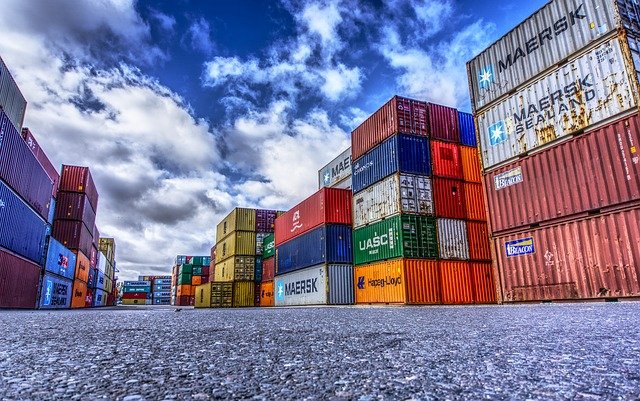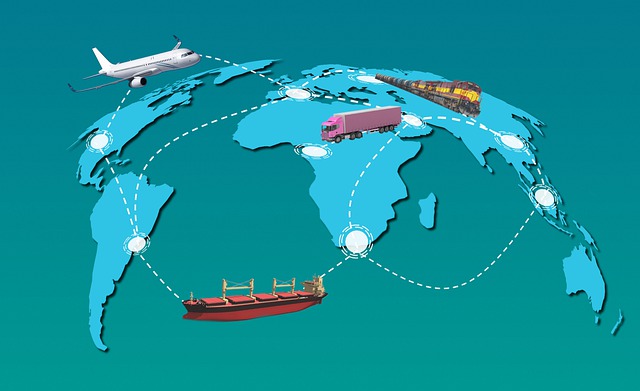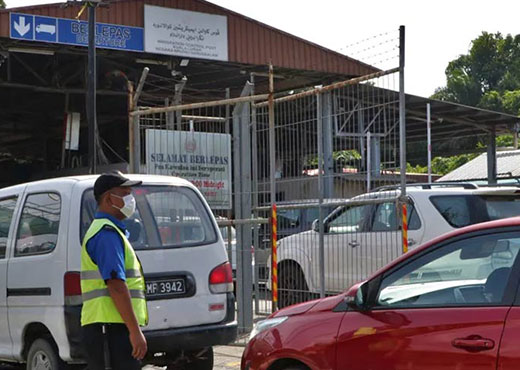Many countries in the Asia-pacific have released digitalization strategies. Cloud Computing technologies are the cornerstone of the digital frontier. For digital economies to thrive they must adopt an open and green ecosystem.
The last two years have been a series of trial. Out of the changes there has been increasing attention in the digital world and rekindled vigor in how people, businesses and organizations should adapt.
As one of the most populous and diverse regions in the world. Asia-Pacific is set to be the fast growing economy at the forefront of the global digital landscape. It represents two-thirds of the world’s population, and would reap an economic dividend of more than 1.7 trillion annually. Mckinsey also notes that Covid-19 has accelerated digital transformation by seven years globally and 10 years in Asia Pacific.
To catch up with this sweeping trend, many countries have released national digitalization strategies. For example, Singapore released its Smart Nation 2025 blueprint, Indonesia and Malaysia released strategies to Go Digital, Bangladesh released its Digital Bangladesh blueprint, and Thailand announced its vision to become a digital Hub in ASEAN.
From a technological point of view, the future of Asia-Pacific will require a digital economy underpinned by leading Information and Communications technology (CT) solutions and an open and green industry ecosystem is needed as soil for innovation.
And finally, we will need to chart an effective course that addresses gaps in equality to normalize the playing field
Build ICT Infrastructure for digital economy
ICT has already proven its value in accelerating economic recovery post-pandemic. Connectivity and computing are the lifeblood of the digital frontier. While connectivity continues to bridge the digital divide offering new education and employment opportunities, enterprises look to the cloud, connectivity and AI to optimize their businesses.
However, the digital readiness of the region varies greatly. For example, China is stepping into data dividend and information dividend, and Southeast Asia (SEA) is still under the peak phase of demographic dividend. In China, 5G has been widely covered across the country and the penetration rate is more than 40% -100+Mbps fiber home pass rate is over 90%. However, the large-scale use of 5G has only started in some SEA countries. In SEA, 4G mobile coverage is slightly above 50%, and fiber broadband only reaches one third of households. Cloud penetration in SEA enterprises is less than 20%, which indicates a huge space for data monetization and industry digitalization.
Regarding 5G technology, it is already emerging as a game changer in key industry sectors. For example, Siriraj Hospital, the largest hospital in Thailand on the frontline in the fight against Covid-19, launched the first 5G smart hospital in the ASEAN region featuring smart logistics, 5G Ambulance and smart inventory management (see photo below). According to professor Dr. Prasit Watanapa, Dean of Faculty of Medicine Siriraj Hospital, Mahidol University,” the 5G smart hospital project will be a new model for modern medical facilities, 5G provides the high-speed connections needed to ensure seamless transfer of patient data and operation of telemedicine equipment”.
In some remote areas with limited access to 5G, digital infrastructure is playing an even more important role. The Bangladesh government has made great efforts and progress in implementing network in over 2,600 townships and enabling social well-being service including e-government and finance.
In Malaysia, known as “the kingdom of spices”, HEXA Food established an Internet of Things (IoT) team to train a chili identification model on Cloud MOdelArts. The image recognition technology of Atlas 500 quickly and accurately identifies the quality of the chilies. Intelligent AI-powered sorting eliminates errors in manual sorting and improves the efficiency by 50%.
Create an open and green ecosystem
Meanwhile, every country, business and individual has faced some common questions recently: how to survive and develop with resilience and robustness in an environment full of uncertainties? The booming digital economy and low carbonization will generate new business form, new production relationships, and new value distribution systems. A healthier and greener industry ecosystem is therefore required.
First, embracing a digital Asia-Pacific will make an open and collaborative ICT ecosystem will include government, partners, operators and users and will help shape opportunities for transformation in different industries. A good example would be the joint open lab in Singapore. All companies, academics and government agencies can use the lab, where they can have access to cutting-edge robotic solutions, intelligent digtal twins, and Ai development kits for research.
Secondly, moving towards carbon neutrality, digital power technologies will be essential to enable energy digitalization for a greener future. In Thailand, smart photovoltaic (PV) rooftops are being installed in over 1,200 convenience stores. This is expected to reduce carbon dioxide emissions for more than 1,300 tons every year. By integrating Ai and Clod in PV for optimal power generation, this makes the solar power plant to highly efficient , safe and reliable and builds the foundation for the solar to become the main energy source.
Chart a sustainable and inclusive course
Simultaneously, we need to be aware that half the world doesn’t have internet access. In Asia-Pacific, according to the APNIC Foundation, the total internet adoption rate in the region remains below half of the total population at 48.4%. By 2023, it’s estimated this will increase to 72% (3.1Billion users) , leaving more than a quarter of the region’s population still disconnected.
That’s simply untenable in an increasingly digital world, people can’t be empowered by technology if they don’t know how to use it. Service like mobile payments, government services, access to digital education and healthcare should all act as gateways to anyone and help underserved communities, including women, girls and older generations.
Take education for example, the ability to learn knowledge regardless of location has helped democratize education resource access. In the Philippine, PLDT-Smart Foundation (PSF) worked with the tech company to promote the School-in-bag project. Each backpack includes a laptop for the teacher, 20 tablets and a Smart LTE pocket Wi-Fi kit. It significantly enhanced the students’ learning capabilities, helped children absorb their lessons, and improved the teaching strategies.
Future is digital
Technology has the power to level the playing field. It can bring education, healthcare and jobs to anyone, anywhere around the world. It will revolutionize businesses and industry and it can help manage our use of the world’s resources to enable a sustainable and green future.
In the Asia-Pacific Region, the digital economy ignites social recovery and enables resilient future. It provides synergies for public-private industrial collaborations across country boundaries and scenarios. As we arrive on the precipice of a digital future, we must strive to focus on the harmony that exists between our real world, and the digital one ahead.
Source: Manila Bulletin
Read original article here
The Business Times reported that the Middle East has always been considered an energy exporter to Asean, but this relationship has become more nuanced in recent years, especially as the former has shifted its focus to boosting non-oil exports.
Notably, countries such as Indonesia and Singapore have benefited.
Late last year, the Indonesian government announced they had secured US$32.7 billion worth of investment commitments from United Arab Emirates (UAE) businesses in various sectors, such as vaccine manufacturing and distribution.
“Indonesia is a very typical case of how I think Asean is becoming a magnet for foreign direct investment (FDI) from the Gulf countries,” said Gyorgy Busztin, a visiting research professor at the Middle East Institute, National University of Singapore.
Dr Busztin cited Asean’s political stability (outside of Myanmar) as well as a general lack of labour unrest as key factors that draw these Gulf countries to the region, even as he qualified that these countries have to be looked on a case-by-case basis.
“Compatibility, stability, and predictability, which are, of course, combined with the presence of a large, young, and highly trained workforce - it all comes together very nicely.”
Singapore too has benefited from the relationship.
A spokesperson from the Singapore Business Council, Qatar, noted that with Qatar is diversifying its economy away from oil and gas as part of its National Vision 2030, some of the key sectors they are looking at include sustainability and technology.
These are sectors in which Singapore has strong capabilities, he said.
"This makes businesses that wish to expand outside of the Middle East region look to Singapore as one of the key destinations to explore opportunities and use it as a base to springboard into the wider region due to its strategic location and easy access from the Middle East," he said.
Alessandro Arduino, principal research fellow at the Middle East Institute at the National University of Singapore, added: “Expertise from Singapore will be beneficial to development in the Gulf and at the same time, can increase profitable cooperation between the Gulf and South-east Asia in areas ranging from artificial intelligence to Internet of Things, and smart cities.”
Leveraging Asean’s strengths
Economic ties between the Middle East and Asean have strengthened significantly since the first Asean-GCC Joint Vision was adopted in 2009.
In 2019, the two blocs further agreed to finalise the Asean-GCC Framework of Cooperation for 2020-2024 to advance collaboration in multiple sectors including smart cities, energy, connectivity, agriculture and halal products. Bilateral partnerships between individual countries have also risen.
The Singapore-UAE Comprehensive Partnership (2019) and the Malaysian Investment Development Authority’s (MIDA) MoU with the Investment Promotion Agency of Qatar (2019) are notable examples.
Heidi Toribio, regional co-head, client coverage, Asia, corporate, commercial and institutional banking at Standard Chartered, said: “As countries across the Middle East diversify into new non-oil sectors, Asean is emerging as an important trade and investment destination.”
In 2020, investments from the Middle East into Asean reached US$700 million, a three-fold growth from 2017. In the first three quarters in 2021 alone, merchandise imports to Asean from the Middle East grew more than 30 percent year-on-year, reaching US$52 billion in value, she noted.
According to a survey of Middle Eastern companies commissioned by Standard Chartered and prepared by PricewaterhouseCoopers, 82 per cent of Middle East respondents expect more than 10 per cent growth in their Asean business revenues this year.
They identified access to the large and growing Asean consumer market (60 per cent); access to a global market (from Asean) enabled by a network of Free Trade Agreements (58 per cent); and diversification of production footprint (51 per cent) as key reasons why they are interested in the region.
The Regional Comprehensive Economic Partnership (RCEP) is also expected to attract more investments; all of the respondents agreed that the ratification of the agreement will lead to more investments from their company. Close to 70 per cent said they expect their company to increase investments by more than 50 per cent over the next 3-5 years.
In terms of geographical preference, respondents chose Malaysia (78 per cent), followed by Singapore (69 per cent) and Indonesia (67 per cent).
Of those who picked Singapore, 94 per cent of the senior executives from the 45 companies based in the Middle East said they consider the city-state a major regional R&D/innovation centre.
A further 87 per cent said Singapore is a desirable hub for regional procurement and that Singapore is an ideal place to set up their regional sales and marketing headquarters.
Finding new growth opportunities
The report identified 5 growth sectors which it expects to drive the future of the Middle East-Asean corridor. They are namely refining and petrochemicals; infrastructure and real estate; renewable energy; retail and consumer goods; and digital infrastructure and services.
Perhaps unsurprisingly, consumption of fuels and petrochemicals continues to grow strongly in Asean, driven by rising consumer and industrial demand. To address energy security concerns, the region is also now focusing on boosting local production capacity by building integrated refining and petrochemical facilities.
Similarly, rapid economic and social progress have accentuated Asean's infrastructure needs.
“The infrastructure segment will continue to dominate the construction industry, maintaining a 46 per cent share in sector GVA (gross value added) by 2025, followed by commercial real estate (32 per cent) and residential real estate (22 per cent),” said the report.
“In particular, demand for healthcare and transport infrastructure as well as logistics and industrial real estate are expected to drive growth, which is creating new investment and business opportunities for Middle East companies.”
Separately, demand for digital solutions and enabling digital infrastructure is expected to see significant growth. Indeed, the region's flourishing digital start-ups are increasingly attracting capital from leading investment firms globally, including many from the Middle East.
In terms of more nascent sectors, Asean nations are increasingly prioritising solar and wind solutions to meet their future energy requirements. Retail and consumer goods sector in Asean is also expected to regain momentum in the years ahead, led by an expected surge in consumer spending.
Source: The Business Times
Link: Here
THE sustainability movement is gaining momentum globally, with growing awareness and calls to act on environmental and social challenges. This has resulted in active steps being taken by various stakeholders to address these issues.
In line with this, we see an increasing demand by customers for more sustainable products and services. Some enterprises have also begun to take steps to incorporate sustainability in their businesses, choosing sustainably sourced raw materials or adopting the relevant sustainability related standards.
Governments too have stepped up efforts to drive sustainability, with many from key economies committing to ambitious carbon reduction targets to address urgent issues on climate change.
Singapore is similarly advancing our efforts in sustainable development, with the launch of the Singapore Green Plan 2030 last year. Decarbonisation is a major theme, and includes efforts such as increasing solar deployment, deploying electric vehicle infrastructure, improving energy efficiency of buildings, and piloting the use of lower-carbon alternative fuels in our aviation and maritime sectors.
Several government initiatives have also been announced to drive environmental sustainability efforts among enterprises, including an increase in the carbon tax to accelerate decarbonisation efforts, and the implementation of a mandatory packaging reporting requirement as the first step to reduce packaging waste.
However, we are still at the beginning of our sustainability journey. Awareness of the concept of sustainability is low among enterprises and many are unsure of its relevance to their businesses, while others lack knowledge on how to start. Business owners are also understandably cautious and worried about the costs of pursuing sustainability.
Sustainability developments and opportunities
With increasing demand for sustainable practices, products and services, it is merely a matter of time before sustainability becomes more than a nice to have for enterprises to do business.
Key business stakeholders are already placing more emphasis on sustainability. Apart from having to adhere to new sustainability policies and regulations imposed by governments in Singapore and overseas, enterprises will need to step up on Environment, Social and Governance (ESG) factors when seeking investments and loans as financiers and investors take steps to green their portfolios. More multinational companies (MNCs) are also taking steps to improve sustainability in their supply chains and require suppliers to meet sustainability standards or achieve sustainability outcomes.
We also see employees increasingly preferring to work with businesses that have embedded sustainability values, requiring enterprises to do more to attract talent.
So what benefits does sustainability bring to enterprises? For a start, sustainability can help enterprises to achieve cost savings and greater resilience. Efforts to review resource use, reduce waste and improve efficiency contribute not only to environmental sustainability, but also to enterprises’ bottom line. With rising energy and material prices, as well as supply chain shortages, enterprises that act early to improve resource efficiency will be able to realise sizeable savings and reduce their exposure to price fluctuations.
An example is Containers Printers, a leading local packaging solutions company supplying to major brands across nutrition, food and medical industries. An early mover in sustainability, the company begun setting targets for energy and carbon emissions reductions in 2018. An Energy Management team was set up to track energy performance and work on energy efficiency projects, which included the deployment of solar panels on the company’s rooftops, retrofitting factory lighting, and replacing equipment to energy efficient models.
These projects helped Containers Printers to achieve significant energy savings and carbon emission reductions, with the deployment of solar panels alone providing annual clean energy potential of 1,800MWh and annual carbon emissions’ reduction of 800 metric tonnes.
The rising demand for sustainable products and services also presents new growth opportunities for enterprises. A survey commissioned by UOB in 2021 found that about one in three respondents in Singapore are willing to pay more for sustainably-sourced goods and services, while 36 per cent replaced their current purchases with more sustainable alternatives. These findings mirror other overseas studies. There are already examples of enterprises that have benefited from stronger engagement with their consumers from building a sustainable brand.
Pure Senses, is a leading retailer of fragrance and beauty products such as Yankee Candle. In 2021, Pure Senses rolled out Purely – a new retail concept incorporating circularity, which include collecting and turning used containers and jars into new products such as terrariums. These efforts have helped Pure Senses to improve its brand proposition and strengthen its connection with customers around the theme of sustainability.
Investments by the Government and industry to green the environment also present opportunities to enterprises. These include the supply of green solutions for the built environment or alternative fuels for various industries. Barghest Building Performance (BBP), an energy efficiency technology company that uses sensors, control systems, and patented software algorithms to significantly reduce energy consumption for commercial and industrial buildings and Equatorial Marine Fuel (EMF), a Singapore oil trading and marine logistics company that is taking steps to supply biofuels and has adopted relevant standards such as the International Sustainability and Carbon Certification (ISCC) to comply with requirements to do so, are but some companies that have benefitted from opportunities that have arisen in this space.
Other companies are intensifying their corporate R&D activities and making significant investments in sustainability-focused innovations to capture new opportunities. Penguin International Limited, a Singapore designer-builder-owner-operator of aluminium high-speed craft, is strengthening its portfolio of sustainable, green vessels, including retrofitting their ferries with solar installations and developing Singapore’s first hybrid-electric seagoing vessel. This has allowed Penguin to capture demand for more sustainable vessels, with contracts to construct hybrid-electric vessels, as well as a contract with Shell to develop Singapore’s first fully electric passenger ferries.
So rather than just being an additional cost or compliance factor, we see sustainability as a new capability that can help enterprises achieve business outcomes in the long run. And it is very encouraging to see many businesses beginning to recognise that their long-term success is inextricably tied to sustainability.
Understanding key sustainability concepts
To get started on this journey, enterprises can begin by understanding key sustainability concepts, identifying the relevant sustainability areas that are material and key to their business, and focusing on improvements in these areas. The next stage would be to develop more comprehensive plans to integrate sustainability into their business strategies and operations.
Enterprises should also look at identifying sustainability trends that are relevant for their industries, and look for ways to differentiate their offerings or develop new products and services to tap on the emerging demands for sustainable solutions.
To enable these efforts, it is important for businesses to strengthen the understanding and knowledge of sustainability amongst management and staff, and set aside time and resources to examine the sustainability issues facing the company.
Government agencies are doing their part to guide and support enterprises in making this transition. Enterprise Singapore (EnterpriseSG) has introduced a $180 million Enterprise Sustainability Programme. The programme supports companies that want to take their first steps towards sustainability through specially curated courses for business owners that cover key sustainability trends and concepts such as decarbonisation, circular economy and sustainability reporting.
The programme also provides support for businesses embarking on projects and building capabilities in areas such as sustainability strategy development, resource optimisation, standards adoption and innovative product development. Enterprise SG has also spearheaded new platforms such as the Sustainability Open Innovation Challenge to help companies source, develop and adopt innovative sustainability solutions.
The industry too is doing its part. Trade associations and chambers and other industry players are driving industry-specific sustainability plans, and various programmes have been launched in partnership with EnterpriseSG to help enterprises build specific sustainability capabilities, such as reducing carbon emissions or adopting sustainability standards.
With so much at stake, we urge enterprises to adapt and leverage the opportunities offered in this new area, so that they can stay ahead of the competition.
Source: The Business Times
Link: Here
The Association of Southeast Asian Nations (ASEAN) include a substantial number of the world’s most dynamic and trade-minded economies – from financial and production capitals like Singapore to emerging global supply chain hubs like Vietnam.
Over the past decade, Asean’s role in global trade has increased substantially and steadily, with total trade among Asean members increasing by 25 per cent between 2010 and 2019 and value of trade with non-bloc partners rising 33 per cent in the same period.
As the world saw Covid-19 put immense pressure on the global supply chains, it also exposed the vulnerabilities of the Asean supply chain.
Asean economies were further held back by systemic inefficiencies such as complex tax regime, e-commerce regulations and customs protocols. For example, customs documentary requirements are vastly different across Asean, resulting in customs delays that create traffic bottlenecks and increase shipping costs.
These differences are largely due to a disparity in digitalisation between the member states. Although all 10 members have access to a common trade platform known as the Asean Single Window (ASW), only about half are currently using it.
Asean member states have also joined forces with their pacific neighbors – Australia, China, New Zealand, and South Korea –to sign the Regional Comprehensive Economic Partnership (RCEP).
However, it is uncertain if RCEP will fare much better – the lack of penalties and binding requirements means that nations can beg off the agreement’s standards if they deem them contrary to the country’s public policy objectives. Future proofing Asean’s 2030 digital supply chain needs to start NOW.
The 2030 Asean digital supply chain – where do we start?
With Covid slowly releasing its clutch on the region and trade agreements offering imperfect assurance of future success, where does that leave Asean’s hopes for a better, more efficient, and more synchronized trade and supply chain network?
Kearney is advocating for Asean to embrace and leverage digitalisation to fundamentally transform end to end supply chains in Asean. Such a digital supply chain should at minimum have four key qualities as seen in the figure below.
However, in reality, the current supply chains in Asean lack some of the necessary qualities. Instead, in Asean, we have difficult-to-navigate logistics-supply markets, manual collection of inventory data and low-to-no tracking of ocean vessels.
There is a better way – imagine this:
- Advanced software to predict an upcoming stock shortage
- Automatic placing an order with a manufacturer with the inventory needed to fulfill it
- An online Asean transport platform to shop for the best logistics option
- The goods being picked up from the manufacturer by crowd-sourced vehicles (essentially Uberised trucks)
- The track-and-trace enabled truck providing all concerned parties with live-location data at any given moment
- The quick and easy online filling of cross-border customs documentation
- Trade documents being stored in blockchain-enabled databases for added security. Any additional services—such as insurance and trade financing— being arranged with similar ease thanks to digitalisation.
- The goods passing through customs without a hitch due to digitalised customs documentation
- During disruptions, AI-equipped system recommending an alternative route to minimize delays. New first-mile and last-mile arrangements are made automatically
But how do we get these from where we are today? There are 4 main themes of actions to path the way: Institutional reform, infrastructural upgrade, technological advancement and adoption, and human capital growth.
Institutional Reform – At a regional level, a good starting point would be for holdout nations to adopt the ASW. Additionally, ASW can be integrated with the Asean Smart Logistics Network (ASLN) and non-member nations can be included in the ASW. On a national level, governments can redirect some resources allocated to support businesses during COVID, to digitalize trade services. Nations can also continue COVID-related debottlenecking efforts – such as streamlining custom processes for ‘low-risk’ traders – and even expand it into non-emergency product categories. These efforts in tandem with digitalisation measures that are already planned or under way, like the parts of the Asean Comprehensive Recovery Framework (ACRF), can go long way toward shifting Asean into a higher logistical gear.
Infrastructural Upgrade – With 9 out of 10 member states having higher logistical costs—relative to national GDP—than the global average, supply chain infrastructural upgrades are a necessary step to achieve this goal. Although some such infrastructure projects, like smart ports and improved internet access in underserved areas, are already underway, an estimated US$1.26 trillion needs to be further invested in infrastructure projects through 2025 to adequately digitalise the Asean supply chain. Learning from the past successes of Indonesia, public-private partnerships (PPPs) is powerful method of ramp up the much-need infrastructural spending.
Technological Advancement and Adoption – Access to up-to-date information and communication technology varies widely across Asean, with small and medium sized enterprises (SMEs) at low levels of adoption of even basic levels of digitalisation. National governments are mindful of these shortfalls and have advanced regional initiatives such as the Regional Digital Trade Connectivity (RDTC) project. To make a meaningful difference, policies need to drive significant expansion of digital access across supply chains, particularly at the SME level. Asean should consider establishing testbeds to try out pilot projects with regional tech “unicorns”, including the selective relaxation of regulations that may be hindering tech innovation. Additionally, as the region becomes more reliant on tech, nations should also invest and cooperate with each other to develop the cybersecurity muscle concurrently.
Human Capital Growth – Asean has an annual digital talent shortfall of 1.08 million workers. The supply chain talent deficit is even deeper—13 million annually and worsening by 14 percent year over year. Two primary causes of these talent gaps seem to be low levels of tertiary education enrolment and relatively meagre rates of Internet usage. A significant compounding factor is a regional failure to realize the full professional potential of its female population; only about 53 percent of women in Asean nations are currently in the workforce. Apart from existing top-down national and regional level efforts, Asean nations should also increase female economic participation and deploy PPPs to incentivise companies to do what is necessary to foster upskilling within their workforces.
SMEs will continue to be the backbone of Asean. With less than 10 percent of SMEs using advanced digital tools for their core business processes, and with just over a third have an online presence of any kind, governments will need to focus on accelerating SME digitalisation to achieve a truly digital supply chain. A potentially effective way to coordinate regional initiatives would be through an Asean SME Control Tower, or ASCT. Such an entity, ideally under the auspices of the Asia Development Bank (ADB) or a similarly trusted authority, would act as an institutional bridge between SME-related activities across Asean countries. It could measure the effectiveness of ongoing initiatives, identify policy gaps, and gain a working understanding of new challenges affecting SMEs as they arise.
One potentially potent way Asean can ensure the long-term success of its digital supply chain initiatives is by tying these efforts to a growing regional push toward more environmentally sustainable business practice. Taking operational cost as a proxy for relative global greenhouse gas (GHG) emissions, logistical inefficiencies account for 15 to 20 percent of global GHG emissions, through such activities as engine idling during roadblocks, inefficient routing of truck traffic, and shipping idle on open waters due to delays. Supply chain digitalisation can greatly enhance our understanding of environmental impacts throughout the logistical chain (e.g., Life Cycle Assessment), aid decision-making for everyone along the length of the supply chain and provide unprecedented level of detail to consumers and social influencers regarding the true environmental impacts of products and services throughout the economy.
In conclusion, the different segments of the economy and society have a great deal to gain from a timely and well-executed digitalisation of Southeast Asia’s supply networks. The work required to make this happen will take years to unfold—and the time to begin is as soon as possible.
Source: The Business Times
Link: Here
BANDAR SERI BEGAWAN – Brunei plans to fully reopen its borders on August 1, following the government’s announcement that restrictions on cross-border travel via land and sea will be gradually lifted.
The full reopening of land and sea borders will depend on the COVID-19 situation in the country and region, as well as the operational readiness of border control posts, said Minister at the Prime Minister’s Office Dato Dr Hj Mohd Amin Liew Abdullah.
During a press briefing on Thursday, he said essential travel through land and sea crossings will be allowed from June 15, including commuters, transit passengers, as well as local and foreign-registered transport operators that conduct cross-border delivery of food supplies.
Non-essential cross-border travel between Brunei and Malaysia had been suspended since the first wave of COVID infections over two years ago, but most air travel restrictions have been relaxed in May.
Source: The Scoop
Source: Biz Brunei
Southeast Asia’s (SEA) USD290 billion Islamic banking market is poised to grow at a compound annual growth rate of about eight per cent over the next three years, led by Malaysia, Indonesia and Brunei Darussalam.
Brunei Darussalam accounts for four per cent of Southeast Asia’s Islamic banking assets, the third highest in SEA, according to the rating agency, S&P Global Ratings in its recent report titled Growing Belief In Southeast Asia’s USD290 Billion Islamic Banking Market.
The rating agency said Islamic financial institutions in the Sultanate constitute about half of the total financial system assets in the hydrocarbon-dominated economy of the country.
They expect the performance of these institutions to mirror that of the broader banking system and anticipate overall bank credit growth at three to five per cent in the next 12 to 18 months.
The bulk of the expansion is likely to come from wholesale customers as the government looks to boost the economy and support local firms through contracts from government-linked companies, foreign direct investment projects, the oil and gas sector, and infrastructure development. Retail activity could remain constrained by regulations on the total debt service ratio and the saturated market.
Source: Borneo Bulletin
Cambodia has exported over 25,000 tonnes of milled rice to ASEAN countries in the first five months of this year, an increase of 9 per cent compared to the same period last year.
The Ministry of Agriculture, Forestry and Fisheries said that from January to May, a total of 25,691 tonnes of milled rice – an increase of 9.06 per cent – has been exported to other ASEAN member countries.
Malaysia is the top export destination at 15,120 tonnes for an increase of 5.33 per cent. Brunei is the runner up as they imported 8,022 tonnes of milled rice or an increase of 2.8 per cent. Singapore and Vietnam ranked third and fourth, importing 1,549 tonnes (0.55 per cent increase) and 1,000 tonnes (increase of 0.3 per cent) respectively.
Lun Yeng, secretary general of the Cambodia Rice Federation (CRF) said that Malaysia is the biggest Cambodian rice importer in ASEAN and is third among 90 countries that imported rice from Cambodia in the past five years (2017-2021) with a total rice of 204,565 tonnes imported or nearly 7 per cent of all 3,148,697 tonnes in that period.
He said that in 2021 Cambodia had exported 46,181 tonnes of Fragrant Rice to Malaysia, worth $32.07 million, making the country third ranked after China and France.
“In Malaysia, most elderly people have heard of Cambodia’s fragrant rice since before the war and the kind of rice that was sold there was known as Somaly. Currently, the milled rice packaged with the name Somaly is still popular there,” he said.
For original article, please read here
Author: Hom Phanet
Source: The Phnom Penh Post
SINGAPORE, June 7 (Xinhua) -- Five priority levers will offer concrete investible opportunities and drive 60 percent of Southeast Asia's carbon abatement potential, according to a new report released at Ecosperity Week, an annual sustainability event held by government-owned Temasek Holdings, on Tuesday.
The Southeast Asia's Green Economy 2022 Report, which is jointly produced by a collaboration between Bain & Company, Microsoft and Temasek, said that these five levers are forest conservation, renewables (solar and wind), electric mobility, sustainable farming and built environment.
The report said that forest conservation is a growing investible space in Southeast Asia, and particularly in Indonesia and Malaysia. It is the largest carbon abatement lever in the region and will represent a 20-billion-U.S. dollar opportunity by 2030.
Renewables (solar and wind) represent a 30-billion-dollar opportunity by 2030, of which solar represents 20 billion dollars. Corporate investment in renewable energy solutions is accelerating in the region and accounted for at least 6.6 billion dollars in corporate green investment since 2020.
E-mobility looks poised to take off in Indonesia, Thailand, and Vietnam, especially for two-wheeler EV manufacturing and sales due to strong automotive manufacturing expertise in these markets.
As to sustainable farming, precision agriculture and farmer service platforms present a large potential opportunity to drive yield improvements and reduce emissions. Malaysia, Thailand and Vietnam are most attractive due to infrastructure readiness and strong regulatory support.
In respect of built environment, there are significant opportunities in energy-saving cooling technology and green building products in construction. The most attractive opportunity can be found in efficient cooling solutions, with large potential for green building materials and products.
According to the report, Southeast Asia needs to address emissions gap and concrete roadmaps to achieve 2030 goals, and prioritize the most investable and addressable decarbonization pathways for the decade.
"With its vibrant and dynamic digital-fuelled economy, Southeast Asia has tremendous potential to make long term, meaningful impact in the global green transition," said Steve Howard, Chief Sustainability Officer of Temasek.
"The opportunities are immense, but it will take collective will, unprecedented collaboration and meaningful financing to unlock the full potential of decarbonization levers across all green investment asset classes."
Dale Hardcastle, partner and director of the Global Sustainability Innovation Center at Bain & Company, said that Southeast Asia needs to move from promises to action, and bridging the gap between opportunities and results will be a key milestone.
"We remain bullish on the 1 trillion U.S. dollars economic opportunities in Southeast Asia, but we need to step up as a region to strengthen the investable market and increase green capital flows," he said. Enditem
Source: China.org.cn
























